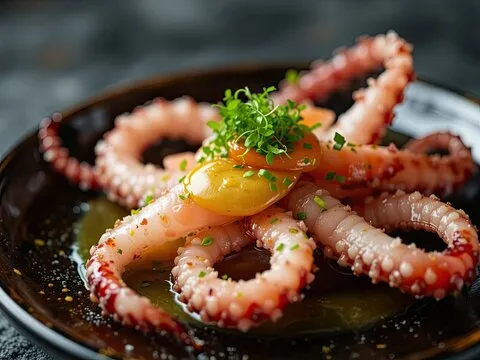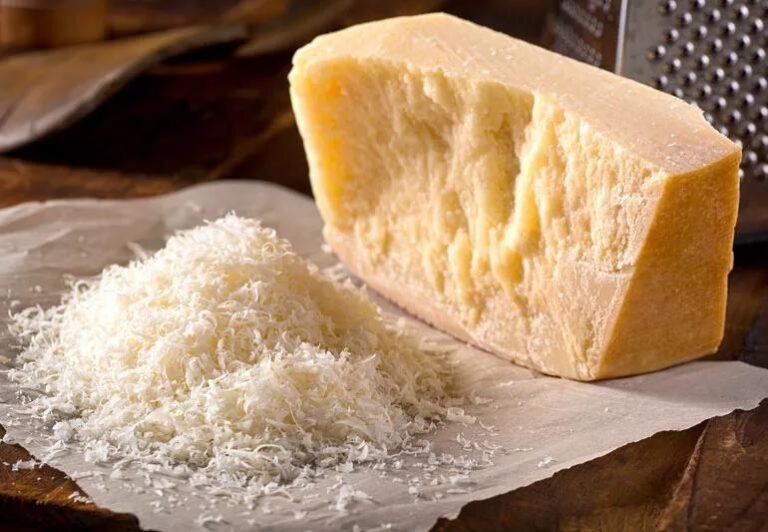Calamariere Historic Sites in Leeds Where Culinary Craft Meets Cultural Heritage
Leeds, a vibrant city in West Yorkshire, is best known for its lively culture, stunning architecture, and deep-rooted history that stretches back centuries. Beyond its industrial heritage and academic prestige, Leeds has developed into a city that embraces the arts, food, and history in equal measure. One of the lesser-known yet increasingly popular cultural fascinations here is the concept of the calamariere a culinary and artisanal tool that represents tradition, craftsmanship, and connection to the sea.
In this article, we’ll explore the calamariere historic sites in Leeds—not only in terms of heritage locations tied to craftsmanship and cuisine, but also as a metaphor for the blending of old-world artistry and modern innovation. Whether you’re a history lover, a traveler, or a foodie, this exploration of Leeds through the lens of the calamariere reveals a deeper layer of the city’s identity.
What is a Calamariere?
A calamariere is traditionally a specialized kitchen tool designed for cleaning and preparing squid, octopus, and similar seafood. Originating from Mediterranean coastal communities, the calamariere became an essential utensil for chefs working with delicate sea ingredients.
Made with precision, the tool often combines a fine-edged blade and ergonomic handle, allowing for efficient preparation without damaging the seafood’s texture. Over time, the calamariere has evolved from a simple fishing tool to a refined culinary instrument celebrated by chefs around the world.
But in the context of Leeds, the calamariere carries a deeper resonance—it represents the city’s embrace of craftsmanship, artisanal production, and the preservation of cultural traditions amid modernization.
Historical Context Leeds and Its Heritage of Craftsmanship
Leeds’ legacy as a hub of craftsmanship dates back to the Industrial Revolution. While it was best known for textile mills and engineering works, the city also became a center for culinary experimentation, importing influences from across the world through its busy trade routes.
During the 19th century, as Leeds expanded industrially, so did its food culture. Markets like Kirkgate Market and Leeds Corn Exchange became gathering places where international ingredients met local talent. It is here that the idea of tools like the calamariere found their relevance—not only in kitchens but in the broader narrative of design, production, and precision.
The Symbolism of Calamariere in Modern Leeds
In modern Leeds, the calamariere has taken on symbolic meaning—representing the fusion of the city’s industrial heritage and its flourishing culinary scene. Restaurants, artisan kitchens, and cooking schools now view such tools as embodiments of craftsmanship and cultural memory.
While Leeds is far from the Mediterranean, its multicultural evolution has turned it into a hotspot for global cuisine. The calamariere thus stands as a cultural bridge, connecting Yorkshire’s ingenuity with Mediterranean artistry.
Calamariere Historic Sites in Leeds
Exploring calamariere historic sites in Leeds doesn’t necessarily mean visiting locations where seafood was prepared centuries ago—it means tracing the lineage of craftsmanship, artistry, and heritage preservation that mirrors the same meticulous skill a calamariere demands. Below are key places in Leeds that celebrate the city’s relationship with tradition, precision, and culinary artistry.
Leeds Corn Exchange
Perhaps one of the most architecturally iconic buildings in Leeds, the Corn Exchange represents a deep connection between trade, design, and craftsmanship. Originally built for grain merchants in the 19th century, today it houses artisan shops, designers, and independent cafés that honor traditional crafts—echoing the spirit of the calamariere.
This building’s domed roof, constructed with perfect mathematical precision, is reminiscent of the same attention to detail used by Mediterranean artisans when crafting culinary tools. Walking through the Corn Exchange feels like stepping into a space where heritage and innovation coexist.
Kirkgate Market
Leeds Kirkgate Market is one of the largest covered markets in Europe and a living testament to the city’s vibrant trade culture. Here, you’ll find butchers, fishmongers, and food artisans who carry on age-old traditions of food preparation.
It’s no surprise that this market could easily be called one of the calamariere historic sites in Leeds—a place where precision tools, fresh seafood, and traditional cooking methods find a natural home. Chefs from across Yorkshire source their ingredients here, continuing the city’s rich culinary story.
Leeds Industrial Museum at Armley Mills
The Leeds Industrial Museum, housed in what was once the world’s largest woolen mill, provides insights into the craftsmanship that defined the city. While its exhibits focus on textiles and machinery, the museum highlights a recurring theme: the mastery of tools and the innovation of design.
The calamariere, with its sharp precision and ergonomic build, reflects the same ethos of form and function that drove the industrial advancements in Leeds.
Thwaite Watermill
Situated on the River Aire, Thwaite Watermill showcases 19th-century milling technology. It’s another of the symbolic calamariere historic sites in Leeds, as it represents how the city harnessed natural resources for sustainable production.
In a culinary context, just as a calamariere uses water to cleanse and prepare seafood, Thwaite Watermill reminds visitors of how water powered innovation and craftsmanship in the region.
The Tetley
The Tetley art gallery, located in the former Tetley Brewery building, bridges Leeds’ industrial past and its creative present. Artists here often explore themes of heritage, identity, and craftsmanship—the same ideals embodied by the calamariere’s design.
Through exhibitions and cultural events, The Tetley preserves the city’s passion for artistry while inviting innovation—just as chefs continually refine traditional tools for modern kitchens.
Culinary Leeds Where History Meets the Table
Leeds’ dining culture perfectly complements the legacy of craftsmanship seen in its architecture and historic sites. The city has become a melting pot for global flavors, with Mediterranean, Asian, and British influences harmonizing beautifully.
In this context, the calamariere symbolizes not only the tools of the chef but also the philosophy of mindful cooking—balancing precision with creativity.
Mediterranean Influence in Leeds Cuisine
Mediterranean restaurants in Leeds, such as San Carlo, Olive Tree, and Café Moor, bring the flavors of Southern Europe to Yorkshire. In these kitchens, the calamariere plays a vital role in preparing authentic seafood dishes.
These establishments stand as modern embodiments of calamariere historic sites in Leeds, celebrating how old-world tools continue to shape modern gastronomy.
Local Craftsmanship and Culinary Schools
Institutions like Leeds City College and The Cookery School at The Grand carry forward the legacy of precision and technique. Students here are taught to respect their tools and ingredients—values synonymous with the careful use of a calamariere.
In this sense, Leeds’ culinary education connects the city’s industrial rigor with artistic sensibility.
The Art and Craft of Calamariere Design
To understand why the calamariere resonates so deeply within the Leeds heritage narrative, it’s important to appreciate its design philosophy.
A calamariere typically features:
- Curved blades designed for delicate slicing.
- Ergonomic handles for precision and safety.
- Durable materials like stainless steel or wood, representing sustainability.
These same qualities mirror the craftsmanship found in Leeds’ historical engineering and artisan production—durability, precision, and beauty.
Modern Innovations
In modern kitchens, the calamariere has evolved to include multifunctional features like detachable blades, anti-slip grips, and eco-friendly materials. Leeds’ design culture, influenced by its history of innovation, naturally aligns with these contemporary developments.
Local designers and blacksmiths, inspired by both culinary tools and industrial heritage, continue to craft items that combine function with artistry—a true celebration of Leeds’ creative spirit.
Why Leeds Embraces Tools Like the Calamariere
The appeal of the calamariere in Leeds goes beyond cooking—it’s about honoring detail, tradition, and the tactile connection between creator and creation. Leeds has long been a city that values hands-on skill, whether in metalwork, textile design, or fine dining.
By integrating the calamariere historic sites in Leeds narrative, the city positions itself as a place where craftsmanship thrives across all disciplines. From industrial machines to artisanal cutlery, the same principles endure: precision, care, and pride in making.
Comparing Traditional and Modern Calamariere
| Feature | Traditional Calamariere | Modern Calamariere |
| Material | Wood or Bone | Stainless Steel / Composite Plastic |
| Design | Simple Hand-crafted | Ergonomic and Multifunctional |
| Durability | Moderate (requires care) | High and rust-resistant |
| Use | Manual seafood preparation | Professional and home kitchens |
| Cultural Value | Heritage craftsmanship | Culinary innovation |
This table illustrates how innovation preserves tradition, reflecting Leeds’ own journey from industrial roots to a modern creative hub.
The Future of Culinary Heritage in Leeds
As Leeds continues to evolve, the interplay between tradition and modernity becomes even more significant. Culinary tourism, heritage preservation, and sustainable design are reshaping how people experience the city.
Future initiatives may highlight calamariere historic sites in Leeds as part of themed cultural tours—linking artisan workshops, local food markets, and historical landmarks into immersive experiences for visitors.
Sustainability and Local Production
Sustainability plays a key role in both culinary and historical preservation. Just as modern calamariere designs favor eco-friendly materials, Leeds is promoting sustainability in food sourcing and urban development. The city’s farmers’ markets and green spaces reflect this alignment between heritage and future-forward living.
Exploring Leeds Through Food and History
Visitors exploring Leeds can experience its rich tapestry of food and culture through walking tours and events like the Leeds Indie Food Festival. Here, artisans display tools, recipes, and cooking traditions that echo the same spirit as the calamariere—precision, artistry, and authenticity.
From heritage landmarks like Kirkstall Abbey to culinary centers like Trinity Kitchen, Leeds offers an experience that blends historical appreciation with modern flavor.
Top 5 Must-Visit Heritage Food Spots in Leeds
| Rank | Location | Specialty | Connection to Heritage |
| 1 | Kirkgate Market | Fresh seafood and spices | Traditional trading hub |
| 2 | The Tetley | Art and food fusion | Cultural reinterpretation of heritage |
| 3 | Leeds Corn Exchange | Artisan foods and crafts | Architectural craftsmanship |
| 4 | Thwaite Watermill | Historic site and café | Industrial heritage meets leisure |
| 5 | Leeds Industrial Museum | Exhibits on design tools | Reflection of craftsmanship |
These destinations embody the values that make calamariere historic sites in Leeds such a compelling concept—places where food, art, and history coexist harmoniously.
Conclusion
The calamariere historic sites in Leeds story is more than a tale of culinary curiosity—it’s a metaphor for how this remarkable city connects its industrial past, artistic innovation, and global influences.
From the bustling aisles of Kirkgate Market to the quiet corridors of the Industrial Museum, Leeds continues to celebrate the beauty of craftsmanship, just as a chef celebrates the finesse of a well-made calamariere.
By embracing tools, traditions, and the people who craft them, Leeds honors its history while crafting its future—one precise, passionate, and flavorful step at a time.






